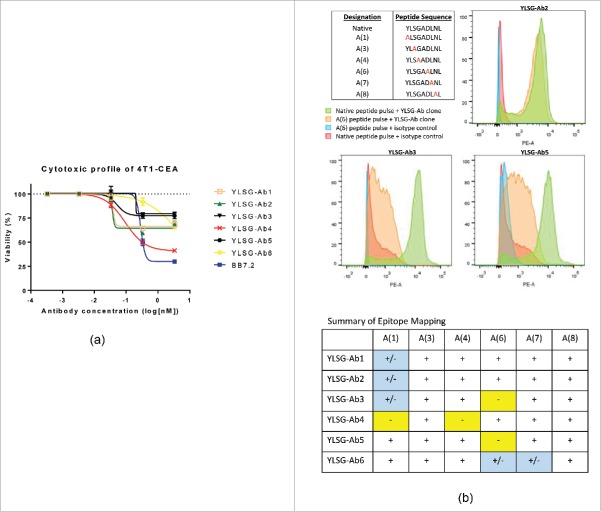Figure 3.
TCR-like antibody/target docking influences ADC potency. (A) 4T1-CEA cells endogenously express high copy numbers of the CEA-specific YLS/HLA-A2 molecule, which is specifically reactive to 6 distinct TCR-like antibody clones (designated YLSG-Ab1–6). Five thousand 4T1-CEA cells were incubated for 3 d with various concentrations of YLSG-Ab1–6 antibodies + 100 ng of a duocarmycin-conjugated anti-mouse IgG Fc reagent. Isotype-corrected viability was then determined using an MTS assay as described in Fig. 1. (B) T2-A2 cells were pulsed for 3 hrs with an HLA-A2 CEA-specific peptide library consisting of native and alanine-substituted peptides at indicated positions. Cells were washed and stained with PE-labeled YLSG-Ab and subsequently analyzed for positivity by flow cytometry. The degree of YLSG-Ab binding to altered HLA-A2 peptides was compared with signals achieved with T2-A2 cells bearing the control native YLS peptide as demonstrated by representative flow histograms and summarized in table format. (+): No observable effect on YLSG-Ab clone binding; (+/−): Partial loss of YLSG-Ab clone binding (i.e., ≤ 50% relative to native peptide signal); (−): Substantial loss of YLSG-Ab clone binding (i.e., ≥ 50% relative to native peptide signal). Bars, ± SD.

